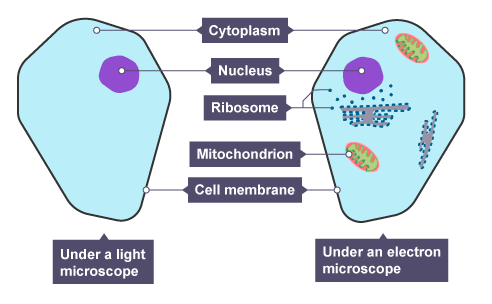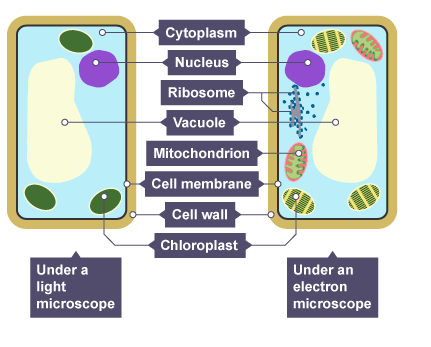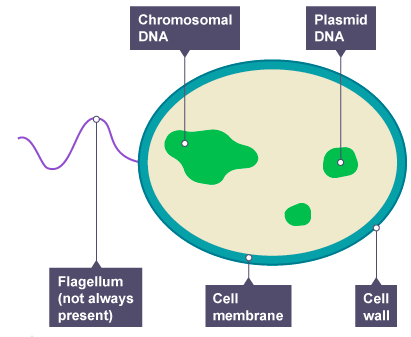Cells
Eukaryotes and Prokaryotes
Two types of cell can be recognised on the basis of their structure:
- __Prokaryotic Cells: __Found in Bacteria
- Eukaryotic Cells: Found in Fungi, Plants and Animals
All animal cells are eukaryotes and have the following sub-cellular structures:
All plant cells are __eukaryotes __and have the following sub-cellular structures:
All bacteria cells are prokaryotes and have the following sub-cellular structures:
Specialised Cells
There are many different types of cells in animals, and each type is specialised for a particular role. Organisms require different types of specialised cells that work together in order to function as a whole. Each specialised cell is adapted to its function.
Nerve cell:
- How is the root hair cell adapted to its function?
- Your answer should include: long / thin / large surface area / maximise surface area / increase absorption / mitochondria
Explanation: It is long and thin - maximise surface area to increase the rate of absorption. Contains mitochondria which is needed for active transport. - What is the function of the xylem?
- Your answer should include: transport water / transport minerals / transport
Explanation: Transports water and minerals from the roots to the plant’s stem and leaves. - What can only be found in plant cells and not animal cells?
- Your answer should include: vacuole / cell wall / chloroplasts






